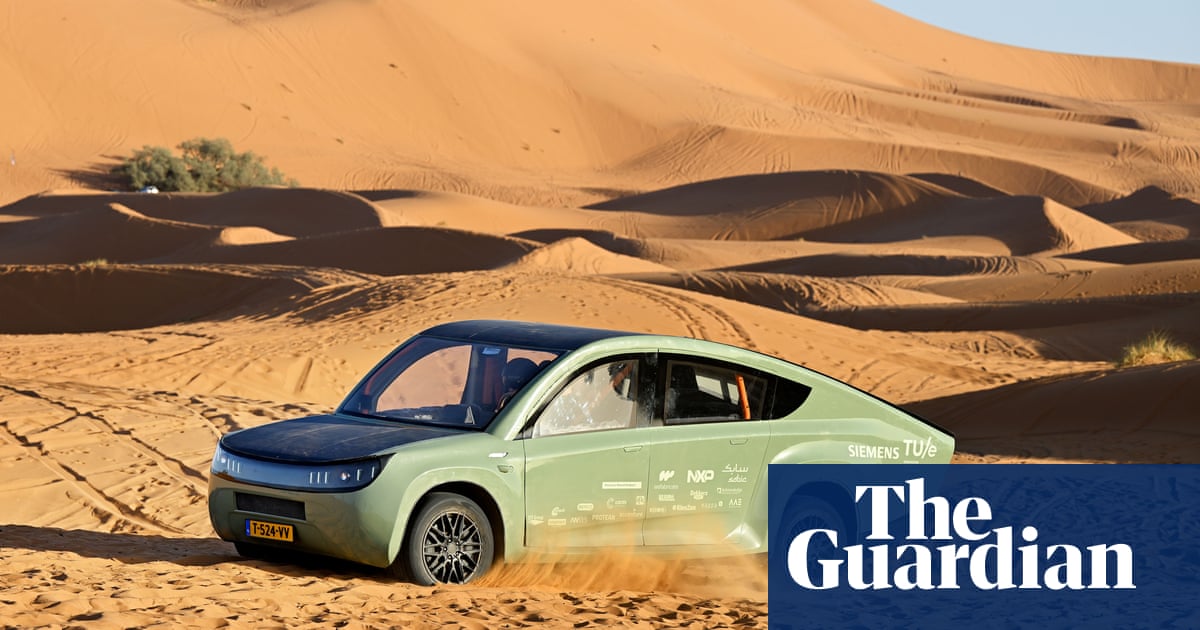
A team of students from the Netherlands are due to complete an 1,800-mile (3,000km) road trip across western Europe in a solar-powered camper van that they designed and built themselves.
The Stella Vita is designed for two passengers and has a kitchen, sitting area, bed, shower and toilet. Using solar energy alone, the vehicle can cover up to 450 miles on a sunny day, reaching a top speed of 75mph, as well as powering all the inside amenities, a TV and a laptop.
The vehicle has solar panels on the roof that can be expanded into a sun cover when parked. The van can also be charged through electric charging ports.
“The technology is there, we just have to change the way we think,” said 20-year-old Tijn ter Horst, one of the Eindhoven University of Technology students onboard. “If 22 students can design and build a vehicle like this in one year, then I’m sure companies could as well.”
The road trip, which started in Eindhoven on 19 September and was due to conclude in Tarifa, south-west Spain, on Friday, was part of the students’ self-set challenge to demonstrate the potential of solar energy.
This is not the first solar-powered vehicle produced by the university, which first joined Bridgestone World Solar Challenge, a biennial Australian solar vehicle competition, in 2013. “This year there was no competition so the students set their own goals and challenges” said Dr Carlo van der Weijer, who has been the team’s coordinator.
While previous Eindhoven teams won consecutive competitions with their five-seater designs, Van der Weijer believes there may be a bigger commercial appetite for the mobile home. Ecologically minded camping enthusiasts might be tempted by an electric van that is not reliant on charging points, which remain scarce in many places, he said.
According to the students, the Stella Vita has been a hit on Spanish roads, attracting attention from other drivers, and Van der Weijer said the vehicle was also an option in less sun-exposed locations.
“On a cloudy day the vehicle can still produce 60-70% of the energy,” he said. “And even if there is no sun at all, you still have an efficient, normal electric car that you can charge from a charging port.”










